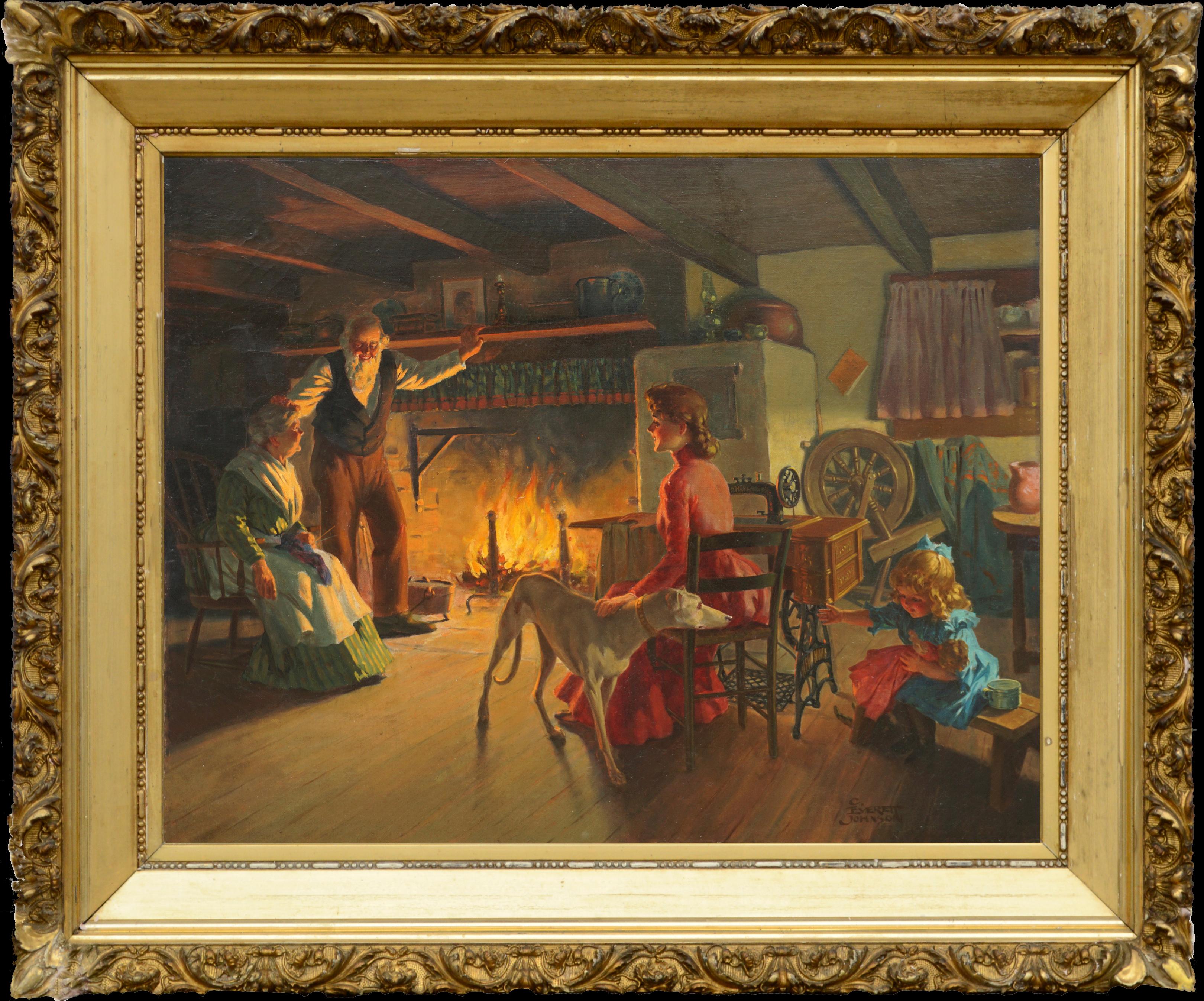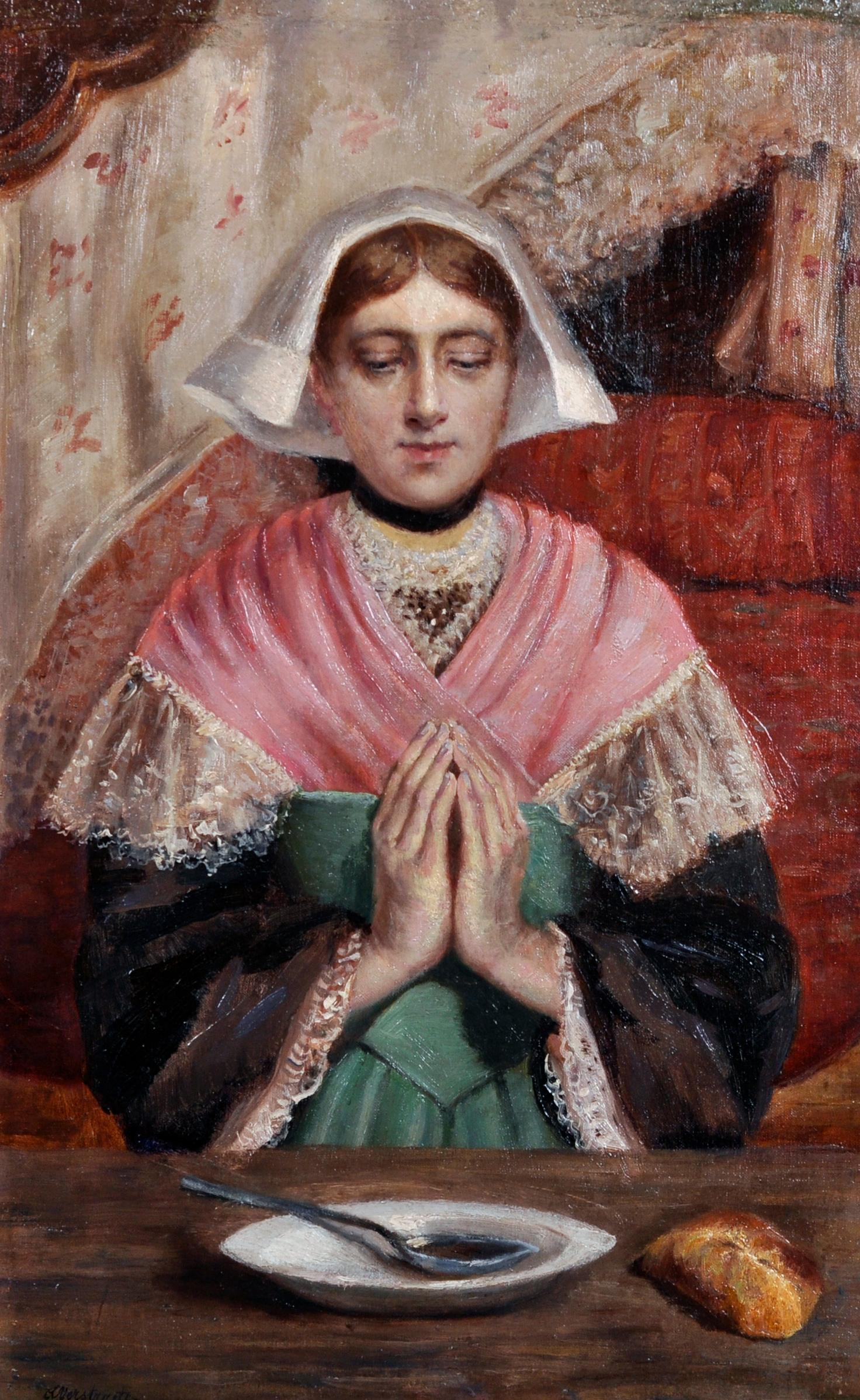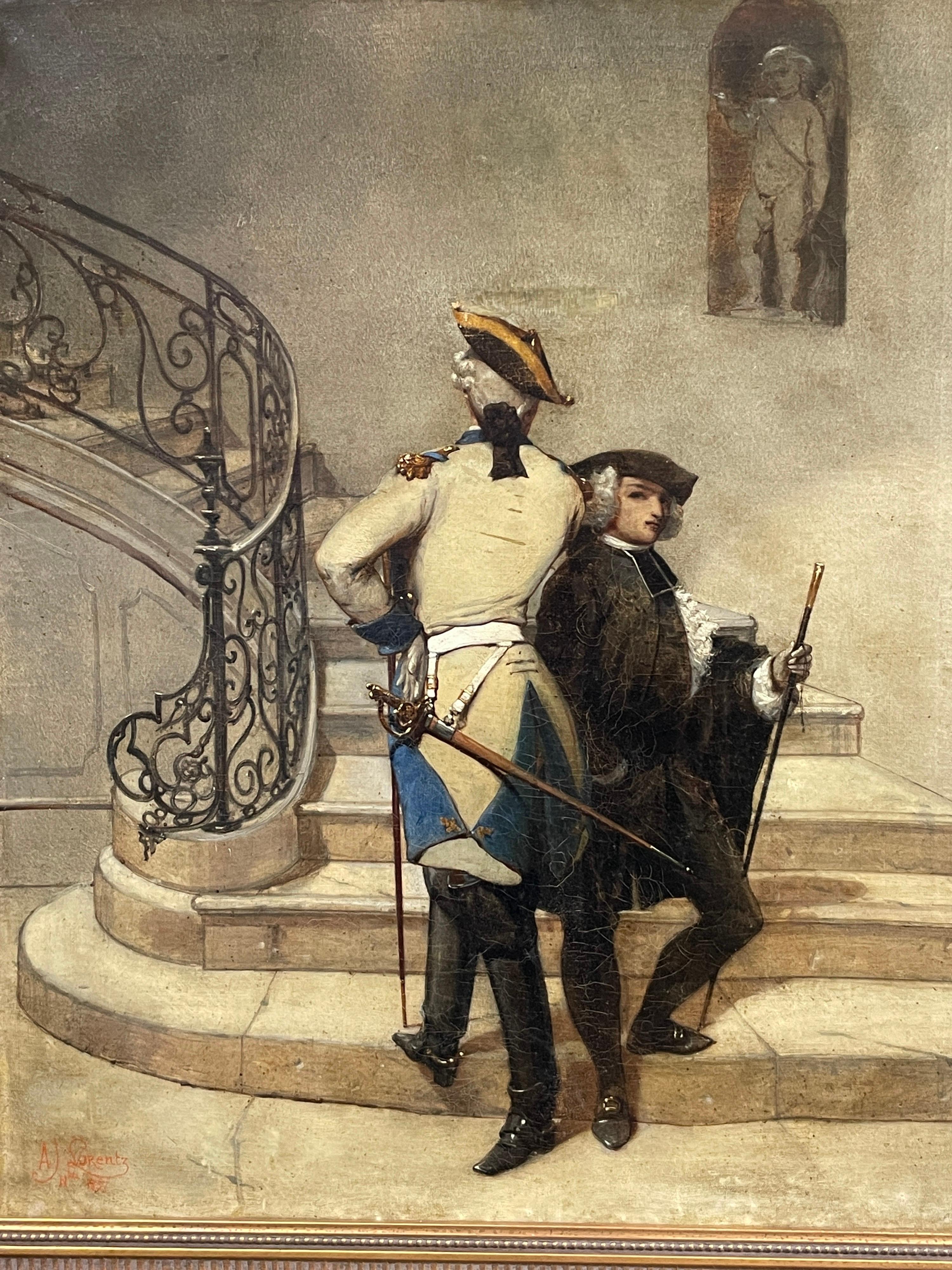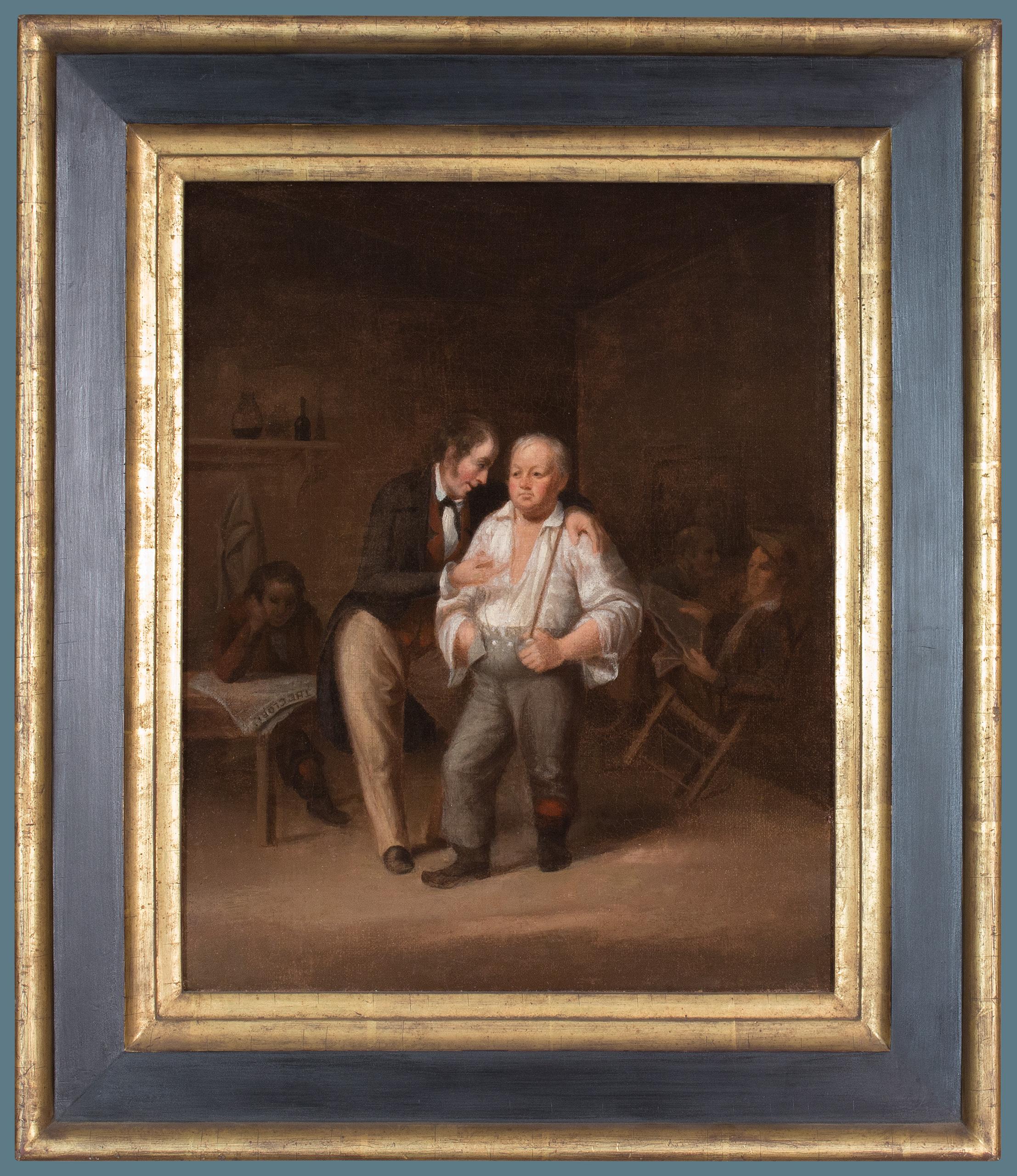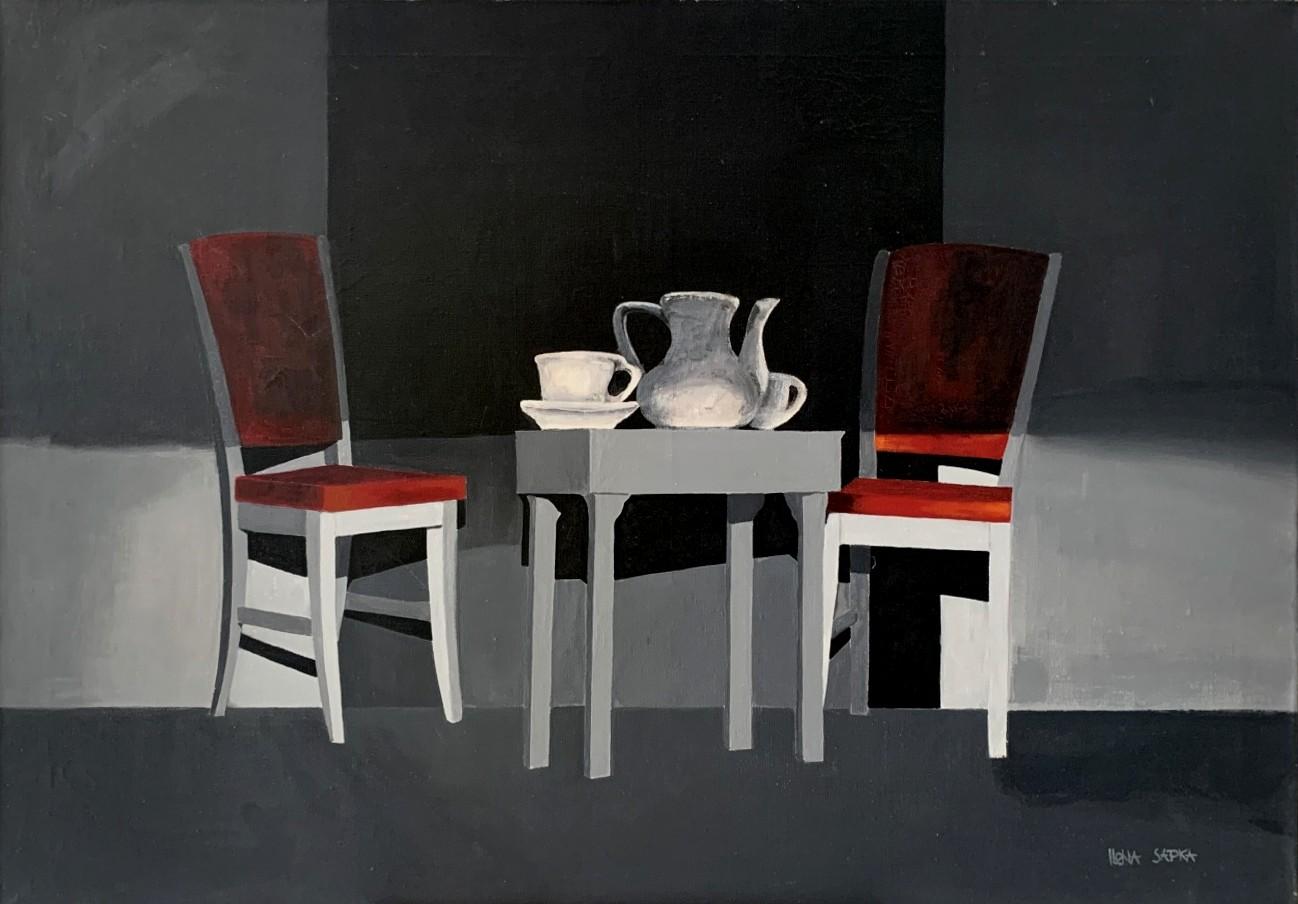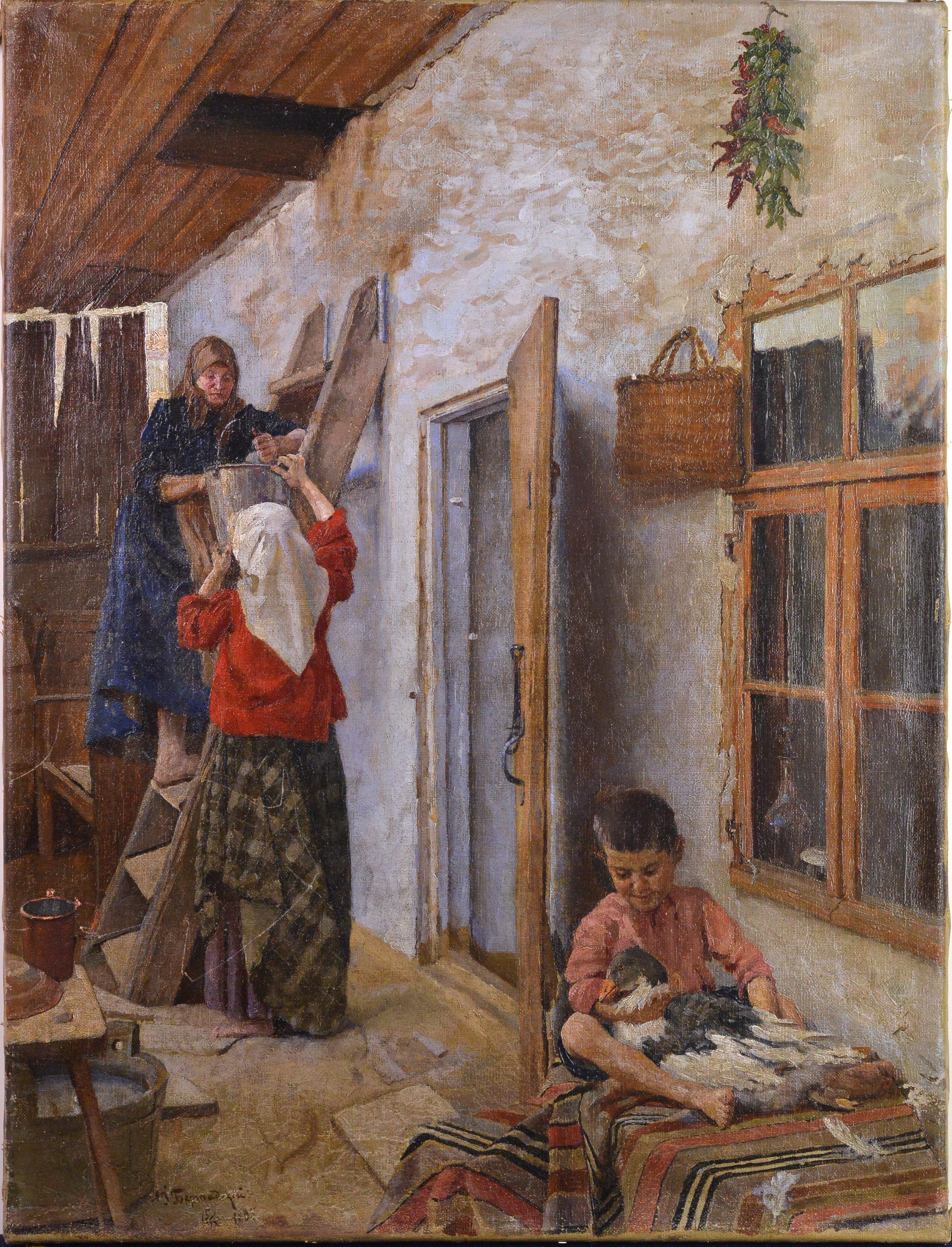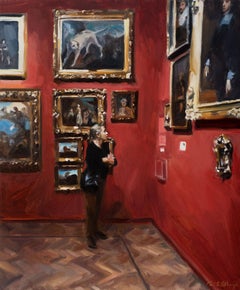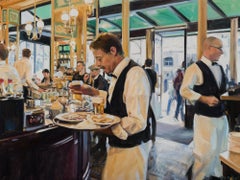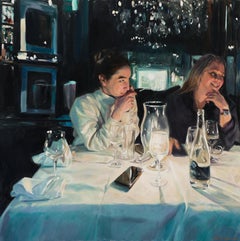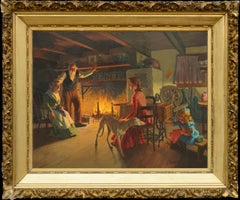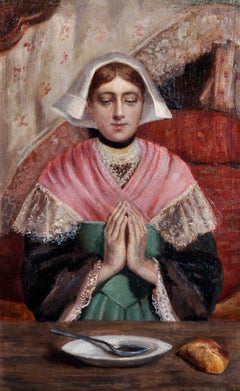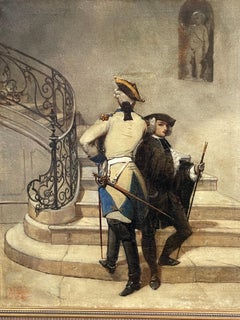
Bar George
View Similar Items
Want more images or videos?
Request additional images or videos from the seller
1 of 4
Paul G. OxboroughBar George2021
2021
About the Item
- Creator:Paul G. Oxborough (1965, American)
- Creation Year:2021
- Dimensions:Height: 36 in (91.44 cm)Width: 48 in (121.92 cm)
- Medium:
- Movement & Style:
- Period:
- Condition:
- Gallery Location:Greenwich, CT
- Reference Number:1stDibs: LU1819283042
About the Seller
4.7
Vetted Professional Seller
Every seller passes strict standards for authenticity and reliability
Established in 1986
1stDibs seller since 2013
169 sales on 1stDibs
Typical response time: 1 hour
Authenticity Guarantee
In the unlikely event there’s an issue with an item’s authenticity, contact us within 1 year for a full refund. DetailsMoney-Back Guarantee
If your item is not as described, is damaged in transit, or does not arrive, contact us within 7 days for a full refund. Details24-Hour Cancellation
You have a 24-hour grace period in which to reconsider your purchase, with no questions asked.Vetted Professional Sellers
Our world-class sellers must adhere to strict standards for service and quality, maintaining the integrity of our listings.Price-Match Guarantee
If you find that a seller listed the same item for a lower price elsewhere, we’ll match it.Trusted Global Delivery
Our best-in-class carrier network provides specialized shipping options worldwide, including custom delivery.More From This Seller
View AllRed Museum
By Paul G. Oxborough
Located in Greenwich, CT
Paul G. Oxborough's mastery as a painter has been firmly established over a decades-long career. His ability to render light in a room has been compared to the work of Velázquez; the...
Category
2010s American Realist Interior Paintings
Materials
Linen, Oil
Price Upon Request
Les Deux Palais
By Paul G. Oxborough
Located in Greenwich, CT
Paul G. Oxborough's mastery as a painter has been firmly established over a decades-long career. His ability to render light in a room has been compared to the work of Velázquez; the...
Category
2010s American Realist Figurative Paintings
Materials
Linen, Oil
Price Upon Request
Hotel Hassler Roma
By Paul G. Oxborough
Located in Greenwich, CT
This painting depicts the Hotel Hassler, in Rome, Italy.
Paul G. Oxborough, American, b. 1965
Paul G. Oxborough studied at Minneapolis College of Art and Design and Atelier Lesueur...
Category
2010s American Realist Figurative Paintings
Materials
Linen, Oil
Price Upon Request
After Dinner
By Paul G. Oxborough
Located in Greenwich, CT
Paul G. Oxborough's mastery as a painter has been firmly established over a decades-long career. His ability to render light in a room has been compared to the work of Velázquez; the...
Category
2010s American Realist Figurative Paintings
Materials
Canvas, Oil
Price Upon Request
Diner
By Max Ferguson
Located in Greenwich, CT
Born in New York City in 1959, Max Ferguson started as a filmmaker, making award-winning animated films as a teenager. But it was while he was a visiting student at an art school in ...
Category
Early 2000s American Realist Figurative Paintings
Materials
Acrylic, Board
$7,000
Manhattan Night Light
By Jenness Cortez
Located in Greenwich, CT
View of Manhattan skyscrapers from an interior
Category
2010s Realist Interior Paintings
Materials
Mahogany, Acrylic
You May Also Like
"The Family Hearth" - Turn of the Century Cozy Interior Figurative Scene
By Charles Everett Johnson
Located in Soquel, CA
Charming turn-of-20th Century interior painting that takes the viewer back to simpler times with grandmother, grandfather, mother sewing and a young girl playing with her greyhound a...
Category
Early 1900s Realist Interior Paintings
Materials
Linen, Oil
A Jolly Time -- German Genre Tavern Painting, 1918
Located in Soquel, CA
Wonderful German genre painting of 17th century tavern scene in style of Franz Hals by Karl Josef Muller (German, 1864-1942) dated 1918. Signed and dated lower left corner "Karl Muller - Hamburg 1918". Condition: Good; professionally restored: Canvas restreched on new stretcher bars; five repairs made to small tears in canvas (see image); cleaned and re-varnished with UV-resistant varnish. Unframed. Image size: 39.5"H x 55"W. We have the original frame which needs some extensive repair to the gesso. Happy to include the frame with the painting as is.
Karl Müller was born in Hamburg-Altstadt in 1865. His wealthy Jewish parents Abraham Müller (1832-1896), citizen of the Hanseatic city since 1869, and Henriette "Jette", b. Burchard (born 1832 Neubuckow / Mecklenburg), had a cigar factory at Spielbudenplatz 5 in St.Pauli. When Karl Müller was ten years old, next to factory and warehouse, now at Speersort 11 (Altstadt), there was also a branch in Altona-Ottensen with the address Am Felde 68. The family lived at the time at Pferdemarkt 13 (Old Town).
After attending the Jewish Foundation School at the Zeughausmarkt, Karl Müller completed a three-year lithography apprenticeship. From 1886 to 1888, he studied at the Royal Saxon School of Applied Arts in Dresden with the history and decoration painter Donadini, then with Professor Hanke of the Prussian Academy of Arts in Berlin.
Karl Müller's painting style was conventional-realistic and did not follow modern trends. In 1891, the oil paintings "Preparation for the Service", "In the guardroom", tattoo", "gymnastics lesson", "covert patrol” and "return from the field service exercise”, whose main motive almost always soldiers formed.In 1893, he painted the" invasion of the 76er " as a horizontal format in black and white, the painting was acquired by the Museum of Hamburg History in 1930. The disposition of Karl Müller could be classified as "kaisertreu" and "national" (Maike Bruhns) at this time - not by chance he acted with his Nicknamed "Soldatenmüller", he successfully participated in exhibitions in Berlin and Hamburg before the turn of the century.
Even at this time, the frequent change of residence is striking: 1893 Papendamm 25 (Rotherbaum), 1896 Bundesstraße 9 (Rotherbaum). In 1898 he was in the Hamburg address book as a "genre and portrait painter" with the residential address 1. average 43 (Rotherbaum) out.
At the age of 38, Karl married in 1903 in the Hanseatic city of the Jewish Louise Hauer (born 12.2.1872 in Hamburg), called "Lieschen". Before her marriage, she lived with her mother at Grindelberg 78. Her father, Martin Hauer (1836-1897), also born in Hamburg and was a citizen of the city since 1862, owned a factory for soap and perfume. In 1904 and 1911, the two daughters Karla and Lotte were born.
1904, the family lived at this time in the Bogenstraße 20, Karl Müller commissioned a portrait of the emigrated hamburger Henry Jones opening the same lodge in the Hartungstraße 9-11. Already at this time he might have been a member of the Hamburg Artists Association of 1832.
Starting from 1908 further change of dwellings on the basis of the telephone books are comprehensible: nearly yearly the family moved and moved thereby from the Grindel quarter over Hoheluft east to Harvestehude and Winterhude. Around 1912 she moved into an apartment in Sierichstraße 156. Here, the landlord Schröder provided the artist with an area of around 45 square meters as a studio on the dry floor. But the building police criticized this use and after some disputes, the painter had to move once again with family and studio. The official telephone directory recorded as an address from 1914 to 1918 Klosterallee 20 (Harvestehude).
Friedrich Jansa described Karl Müller's changed motif choice in his artist's glossary in 1912: "In recent years he has been watercolouring a lot in the Hamburg area and now mainly takes his motifs from Hamburg harbor...
Category
1910s Realist Interior Paintings
Materials
Linen, Oil
19th Century Belgian Realist Oil Painting - Young Lady Saying Grace at Supper
Located in Cirencester, Gloucestershire
Artist/ School: Alfred Verstraeten (1858-1936) Belgian, signed
Title: Giving Thanks
Medium: oil painting, on canvas, unframed.
Size: painting: 21.5”...
Category
Late 19th Century Realist Figurative Paintings
Materials
Canvas, Oil
The Dueling Partners 1850's French Oil, Chateau Staircase Interior Beautiful oil
Located in Cirencester, Gloucestershire
The Duel
by Alcide Joseph LORENTZ (French 1813-1891)
signed and dated 1857
oil painting on canvas, framed
framed size: 30 x 25 inches
condition: very good and presentable, previous r...
Category
Mid-19th Century Realist Figurative Paintings
Materials
Canvas, Oil
The Wool Winder (1877) by Swedish Female Artist Emma Ekwall
Located in Stockholm, SE
In The Wool Winder, Emma Ekwall captures a moment of quiet domestic intimacy between a young woman and a man as they wind wool together—she with focused care, he with gentle attentiv...
Category
1870s Realist Figurative Paintings
Materials
Canvas, Oil
Nineteenth century tavern scene
Located in Philadelphia, PA
Unknown Artist
(probably American, nineteenth century)
Tavern Scene
Oil on canvas, 15 x 12 inches
Framed: 21 x 18 inches (approx.)
Category
Mid-19th Century Realist Figurative Paintings
Materials
Canvas, Oil
Recently Viewed
View AllMore Ways To Browse
Vintage Black Maid
Vintage Cardinal Bird
Vintage Circus Elephant Poster
Vintage Crawling Baby
Vintage Denver Poster
Vintage Horse Riding Hat
Vintage Kentucky Derby Art
Vintage Orient Express Posters
Vintage Womens Hats 1960s
W Burnett
Walter Griffin
Warhol Electric Chair Print
Warhol Karen
Warhol Trial Proof
Wayang Kulit
Willem de Kooning On Sale
Winifred Nicholson
Yoshida Hiroshi
